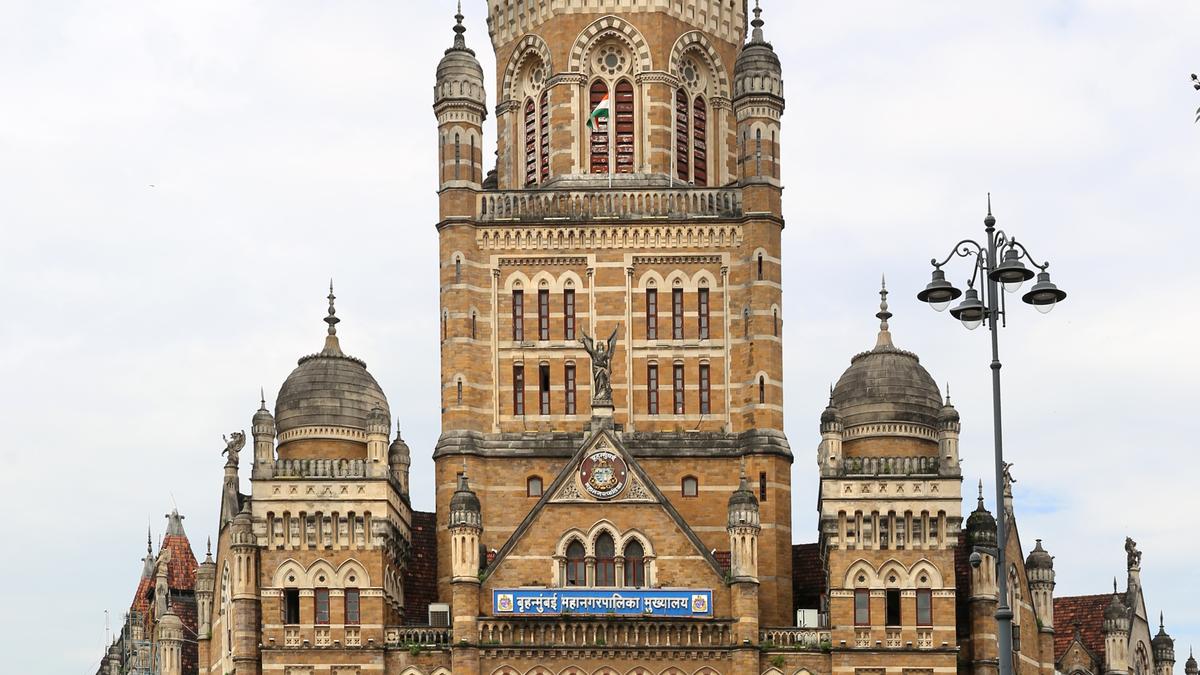
Brihanmumbai Municipal Corporation.
| Photo Credit: The Hindu
The allocation of the total Brihanmumbai Municipal Corporation (BMC) budget to the Ward Budget has shown a steady decline, from 18% in 2021-22 to 11% in 2025-26, shows a study titled ‘Mumbai Ward-Wise Budget Paper 2025’ conducted by Praja Foundation, in collaboration with Tata Institute of Social Sciences (TISS).
The report on the Ward Wise Budget of Mumbai, providing an in-depth analysis of allocations and expenditure in all 24 administrative wards of Mumbai, was released on Thursday (October 9, 2025). It highlights key disparities in budget distribution across all wards and underscores the urgent need for equitable and participatory budget planning.
“Over the past five years, while BMC’s overall budget has nearly doubled—from ₹39,027 crore in 2021–22 to ₹74,367 crore in 2025–26—the share allocated to wards has steadily declined. This widening gap highlights the urgent need to strengthen ward-level financial planning,” said Milind Mhaske, CEO of Praja Foundation.
According to the report, in the last five years, the percentage of BMC capital expenditure allocated to wards has sharply dropped from 10% in 2021-22 to just 3% by 2025-26, signalling the trend of a growing gap in capital investment between overall city projects and local ward-level needs.
The other findings show disparity between population size and allocation of resources. For instance, the Eastern Suburb generates the lowest per capita property tax among the three regions (Western, South, and Eastern), yet its per capita revenue expenditure is more than double its per capita property tax contribution. In the case of South Mumbai hosting 25% of Mumbai’s population, it records the highest per capita revenue expenditure, while the Western region, having the largest share of the city’s population (44.42%), receives the lowest per capita revenue and capital expenditure, highlighting a disparity.
“The Eastern Suburb, with 30.78% of the population, secures the highest per capita capital expenditure, suggesting a stronger focus on infrastructure and developmental projects in this region,” suggests the report.
“The report highlights the importance of designing ward-level plans that consider population growth, infrastructure needs, and living conditions, ensuring that the budget truly reflects the aspirations of citizens. It also calls for a dedicated platform to facilitate participatory budgeting, enabling wider citizen engagement,” said Nitai Mehta, Founder and Managing Trustee, Praja Foundation.
The report analysed the ward budgets for five years, 2021-22, 2022-23, 2023-24, 2024-25 and 2025-26 and conducted study of budget allocation for revenue and capital expenditure for various civic amenities like Solid Waste Management, Storm Water Drains, Roads, Footpaths, Gardens, Markets, Public Health Services and Allocation for Slums provided in the ward budget books.
“This report highlights the manifestation of ward-wise budget in the public domain, disparity of allocation within the wards and regions of Mumbai, such as Island City, Eastern and Western Suburbs. The findings of this report raise a question on why important factors in budget planning, such as population and living conditions, are disregarded while planning for the city’s budget,” said Amita Bhide, Professor, Tata Institute of Social Science (TISS).
Published – October 10, 2025 05:12 am IST


